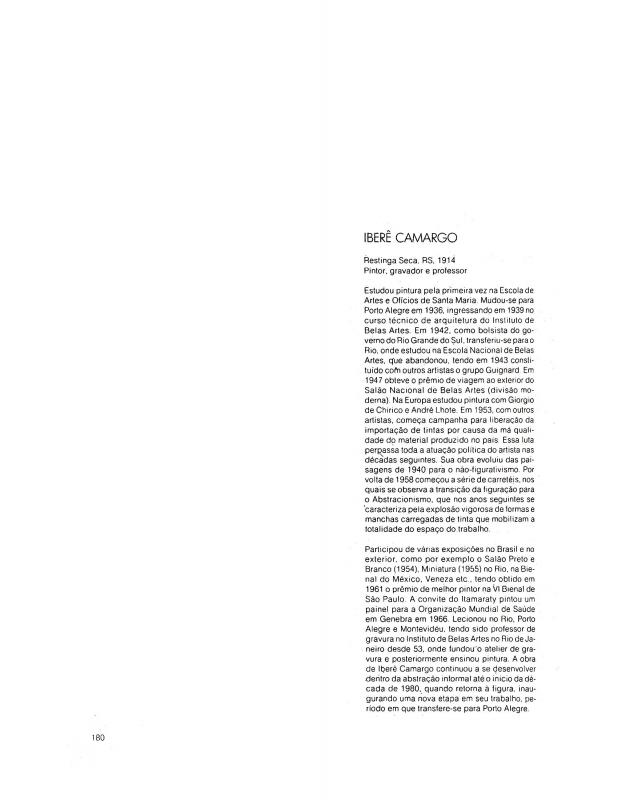This text encompasses an interview granted to Marcos André Martins and Carlos Martins (curator of the show A gravura de Iberê Camargo: Uma retrospectiva) held at the Espaço Cultural BFB in Porto Alegre (1990). The artist (Camargo) describes and analyzes his engraving and painting work, comparing the processes and results of each, afterward explaining the difficulties of production that are endemic to Brazil, which “my passion for the struggle” attempts to change. His narrative reveals an artist that opposes facile solutions for his works and normative categories (figurative or abstract), and who is interested in solitude and dramas of the human condition. In the catalogue, the essay by Marcos André highlights the importance of the show as a “first retrospective” on this artist who hails from the state of Rio Grande do Sul. The interviewers also differentiate between the artist’s engraving and painting; in the latter, Camargo extracts and/or adds material (pigments) in order to create a surface for his drawings; meanwhile, in engraving, his process entails one single application which condenses “the complexity of a final gesture” in a first take. The exhibition includes a noteworthy collection of engravings that were organized into three modules: learning, development of a language, and graphic production.
[For complementary reading, see in the ICAA digital archive the interviews with Iberê Camargo conducted by Fernando Cocchiarale and Anna Bella Geiger, “Iberê Camargo” (doc. no. 1110415), and the exclusive in the Revista Cultura, “Iberê Camargo: o poder do gesto” (doc. no. 1110416). See also the essay “O sentido da alquimia de Iberê Camargo,” by Mônica Zielinsky (doc. no. 1110421)].


